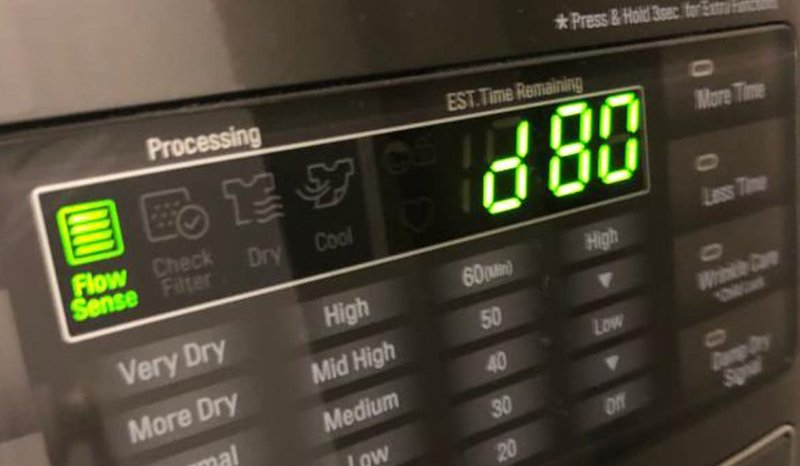
You might be wondering, “Why does this happen, and what can I do about it?” That’s exactly what we’re here to explore. Understanding the root of the issue means you can take steps to fix it yourself or at least have a meaningful conversation with a repair technician. We’ll break down the common causes in easy-to-understand terms, so by the end of this article, you’ll feel like a dryer error code detective, ready to tackle any problem that comes your way.
The Heater Assembly: Heart of the Drying Process
At the core of your dryer’s ability to heat up is the heater assembly, which is the part responsible for generating warmth. Think of it as the engine of the drying cycle. Just like a car can’t run without its engine, your dryer can’t dry without a functional heater assembly. If there’s an issue here, you’ll end up with damp clothes and that annoying “HE” error code.
Now, why would the heater assembly fail? Sometimes, it’s due to wear and tear. Imagine using the same light bulb for years—eventually, it burns out. Similarly, the heating element can degrade over time. Other times, the issue might stem from a fault in the thermal fuse, which acts as a safety device, preventing the dryer from overheating. It’s like a circuit breaker that trips if things get too hot, ensuring nothing catches fire. If the thermal fuse is blown, the heater assembly won’t get the signal to heat up.
If you suspect the heater assembly or its components are causing the error code, the next step would be a closer inspection. Typically, this means, ideally, calling a professional technician. However, if you’re feeling adventurous and have a bit of DIY spirit, you could carefully open the dryer’s back panel (with the power off, of course) to take a look. Spotting a broken or burnt-out heating element might just be the confirmation you need.
Ventilation Issues and Their Impact
Another common culprit behind the “HE” error code is poor ventilation. Think of your dryer vent as an airway; if it’s blocked, breathing becomes difficult. Similarly, if the air can’t flow freely out of your dryer, it can’t effectively dry your clothes. Poor ventilation might not seem like a big deal, but it plays a crucial role in the drying process. When the vent is blocked, the dryer can overheat, and as a result, you get the error code.
Common causes of ventilation problems include lint buildup in the dryer vent or a kinked vent hose. Just as a clogged straw makes it hard to drink your favorite beverage, a clogged vent makes it tough for heat to escape. Regular cleaning of the lint screen and checking the vent hose for any obstructions can help prevent such issues.
If you’re experiencing the “HE” error, take a moment to inspect your dryer’s vents. Unplug your dryer, detach the vent hose, and give it a good clean. Check for lint buildup on the outside vent as well. Many times, simply clearing these obstructions is enough to get things back to normal—like giving your dryer a breath of fresh air.
Electrical Problems: A Silent Saboteur
Electricity is the lifeline of any dryer. Without it, nothing operates. When encountering the “HE” error code, we can’t ignore the possibility of underlying electrical issues. It’s akin to expecting your smartphone to work without a charge—power is essential. If your dryer isn’t receiving the appropriate electrical current, it can’t generate the necessary heat, resulting in those frustrating error alerts.
One potential issue could be with the dryer’s power supply itself. Check if the outlet is delivering power correctly. A voltage drop or surge might disrupt the dryer’s heating capabilities. Additionally, the circuit breaker might have tripped. It’s simple to reset it, much like flipping a light switch back on.
Another angle to consider is the dryer’s wiring. Damaged or loose wires can interrupt the electrical flow, much like a frayed phone charger that won’t consistently charge your device. If you suspect electrical problems, it’s best to bring in a professional, as they possess the tools and expertise to handle such complex issues safely.
Preventative Measures and Maintenance
A proactive approach can save you from the headache of dealing with error codes in the first place. Regular maintenance is the name of the game here. Just like how you take your car in for regular check-ups, giving your dryer periodic attention can prevent most issues. Start by cleaning the lint filter after each use. It might seem trivial, but it’s highly effective in maintaining proper airflow.
Schedule a more in-depth cleaning of your dryer’s vents and ducts every few months. Think of it like spring cleaning for your dryer. This prevents lint buildup and ensures your dryer doesn’t have to work double time just to dry clothes. It’s also wise to occasionally inspect your power supply and wiring for any signs of wear and tear. Prevention is always better than cure, right?
If in doubt, don’t hesitate to call in a technician for a comprehensive check-up. It might cost a bit upfront, but it can save you much more in the long run, preserving your dryer’s lifespan and ensuring your laundry days remain stress-free.
By understanding these common causes and maintaining your dryer, the “HE” error code can become a rare occurrence. Armed with this knowledge, you’re now better prepared to handle or even prevent these glitches, ensuring your dryer remains a trusty ally in the battle against laundry piles.